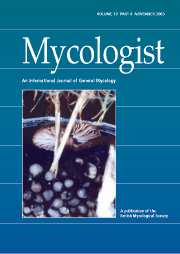Article contents
Useful Fungi of the World: the ‘Poor man's tuffles of Arabia’ and ‘Manna of the Israelites’
Published online by Cambridge University Press: 09 May 2002
Abstract
The ‘Poor Man's Truffle’, ‘Truffles of the Desert’ or ‘Fagaa’ were much appreciated in earlier times, particularly by the Ancient Greeks and Romans, who imported them, largely from Carthage and Libya. They appear prominently in the writings of Theophrastus, Dioscorides and Pliny, using various names, such as hydnum, miso or misy. All fungal fruitbodies that grow underground are loosely termed ‘truffles’. The desert truffles, however, are only distantly related to the more highly prized true truffles (Tuber species), especially of southern Europe. Two genera are involved, the larger Terfezia Tul. & C. Tul., with verrucose spores, and Tirmania Chatin, with smooth spores. They are white to yellowish brown truffles, rather soft and fleshy, and can grow to quite a large size, on average around 3–10 cm across, and may weigh from 60–150 gm, although the largest recorded fruitbody (up to 1,000 gm) was produced by Tirmania nivea Desfontaines.
- Type
- Original Article
- Information
- Copyright
- © 2002 Cambridge University Press
- 3
- Cited by


